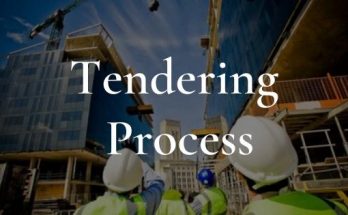
Image Source: Google
Project management tendering is a critical process that ensures projects are completed on time, within budget, and to the satisfaction of all stakeholders. From the initial concept to the final completion, effective project management tendering requires careful planning, coordination, and communication. In this article, we will explore the essentials of project management tendering and the key steps involved in successfully managing a project from start to finish.
The Tendering Process
Preparation Phase
- Define the project scope, objectives, and deliverables
- Identify key stakeholders and their requirements
- Develop a project plan outlining timelines, resources, and budget
Tender Submission
- Develop a tender document outlining project details, requirements, and evaluation criteria
- Invite bids from potential contractors or suppliers
- Evaluate and compare bids based on criteria such as cost, quality, and experience
Key Components of Successful Project Management Tendering
Communication
Effective communication is essential throughout the tendering process to ensure all stakeholders are informed and aligned with project goals and timelines.
- Regular meetings with stakeholders to discuss progress, challenges, and next steps
- Clear and transparent communication of project requirements and expectations
- Timely updates on any changes to project scope, budget, or timelines
Risk Management
Identifying and mitigating risks is crucial to the success of any project. By anticipating potential challenges and developing contingency plans, project managers can minimize disruptions and delays.
- Conducting a thorough risk assessment to identify potential threats to project success
- Developing a risk management plan outlining strategies to mitigate and respond to risks
- Regular monitoring and review of risks throughout the project lifecycle
Quality Assurance
Ensuring quality is maintained throughout the project is essential to deliver a successful outcome that meets stakeholder expectations.
- Establishing quality standards and benchmarks for project deliverables
- Conducting regular inspections and audits to assess project quality
- Addressing any quality issues or concerns promptly and effectively
Best Practices in Project Management Tendering
Engage Stakeholders
Engaging stakeholders throughout the tendering process is critical to ensure their needs and expectations are met.
- Consulting with stakeholders to gather input and feedback on project requirements
- Involving stakeholders in key decision-making processes
- Keeping stakeholders informed of project progress and any changes that may impact them
Use Technology
Utilizing project management software and tools can streamline processes, improve communication, and enhance collaboration among project team members.
- Implementing a project management system to track progress, tasks, and milestones
- Leveraging communication tools to facilitate real-time collaboration and information sharing
- Utilizing data analytics to monitor project performance and identify areas for improvement
Conclusion
Project management tendering is a complex process that requires careful planning, coordination, and execution. By following the key steps outlined in this article and incorporating best practices in project management, organizations can increase the likelihood of delivering successful projects that meet stakeholder expectations. Effective communication, risk management, and quality assurance are essential components of successful project management tendering, and by prioritizing these areas, project managers can navigate the challenges of project delivery and achieve positive outcomes.